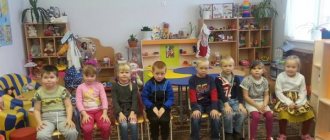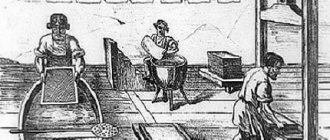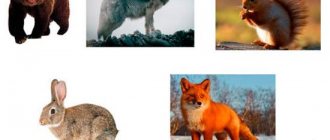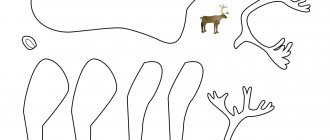Physical development
A 3-year-old child controls his body much more confidently than a 2-year-old. At this age, children can:
- jump on two legs in height and length;
- stand on one leg without falling;
- jump over obstacles;
- run quickly and confidently;
- climb the wall bars;
- ride a tricycle or scooter;
- ride downhill;
- kick the ball.
Kids love physical activity and quickly develop their abilities.
Speech development
The speech of a three-year-old is very different from the speech of a two-year-old baby. At this age, the child already has a fairly large vocabulary - from 1000 words. The baby can reason and make simple conclusions about people, objects and phenomena.
Children actively remember new words, play with them (change pronunciation, rhyme, come up with sound combinations). Long, complex words are still difficult for babies to pronounce, so they mutilate them.
A 3 year old child should be able to:
- tell how his day went;
- use sentences of 3–5 words or more in speech;
- describe the picture;
- memorize poems and songs;
- name not only the object itself, but also its details (handle of a cup, nose of a dog);
- establish semantic connections between objects;
- ask and answer questions;
- Use polite words (“thank you”, “please”).
Three-year-olds do not yet have very well developed speech. They pronounce hissing and sonorant sounds poorly. They construct sentences incorrectly and lose the endings of words. All this is the norm of development. With age, problems will be eliminated.
Math skills
At 3 years old, children already have some mathematical skills. They must know and be able to:
- count to five forward and backward;
- show the number on your fingers;
- know what numbers from 1 to 5 look like;
- compare the number of objects in different groups using the concepts “more”, “less”, “same”;
- know and be able to draw basic geometric shapes (circle, square, triangle, oval, rectangle);
- recognize the outlines of geometric shapes in various objects (a clock is a circle, a TV is a rectangle).
Some kids already know all the numbers from 0 to 10 and can write them. This is a good help for future preparation for school.
Development of attention
Three-year-olds must have the following skills:
- concentrate on the task at hand for 10–15 minutes;
- keep up to five objects in your field of vision at the same time;
- remember and repeat after an adult the suggested words and movements.
It is worth remembering that the attention of a junior schoolchild is still unstable and easily scattered.
Intellectual development
At this age, visual-effective thinking is transformed into visual-figurative thinking. If previously the baby learned about the world through direct contact with various objects, now he can already operate with images of these objects stored in his memory.
At three years old, a child should be able to:
- understand simple cause-and-effect relationships;
- demonstrate first action planning skills;
- compare objects by size, shape, color;
- put together simple puzzles from four large parts;
- know the basic colors and be able to name them;
- know the names of surrounding objects (dishes, furniture, products), animals;
- know the names of basic geometric shapes.
An important feature of this age is that a growing baby can think and reason about objects that are not in the field of view. This is an important step towards further development of thinking.
Fine motor skills
The youngest preschooler actively develops and improves fine motor skills. He must be able to:
- hold a pencil, felt-tip pen, or drawing brush correctly;
- trace simple drawings using dots;
- draw geometric shapes, straight and broken lines;
- write familiar block letters;
- use scissors to cut simple shapes from paper;
- shade the drawing in different directions;
- coat the paper appliqué parts with glue and glue;
- sculpt balls and sausages from plasticine and connect them.
There are many finger games for developing a child's fine motor skills.
Self-care skills
Children at 3 years old can already do a lot on their own, without the help of their elders. For example:
- dress, undress, fasten and unfasten zippers and large buttons;
- putting on shoes (it’s normal if the baby puts shoes on the wrong foot);
- confidently wield a spoon and fork, drink from a cup, wipe your mouth with a napkin;
- wash your face, wash your hands, brush your teeth;
- put toys back in place;
- carry out small household tasks (lay out cutlery on the table, pour food into the cat’s bowl).
The less parents try to help the baby, the faster he develops everyday skills.
Neuropsychic development
During this period, the performance of the nervous system increases. The baby can already restrain his emotions, for example, not cry when he is hurt or offended.
His ability to concentrate increases. Now he can do something for 10–15 minutes without being distracted by anything else. Distracting a crying three-year-old by redirecting his attention is not so easy, because he has already concentrated on his negative emotions.
At this age, the child cannot yet properly manage his behavior. The three-year crisis mentioned above also adds to the difficulties. The baby's inner world is full of contradictions that result in whims and hysterics.
Logical thinking
At 3 years old, children already have some logical thinking skills. They must be able to:
- combine two objects into a logical pair (“pencil-paper”, “tea-cup”);
- exclude unnecessary items from a group;
- understand the logical sequence of events (clouds gathered in the sky - it began to rain - the ground became wet);
- highlight the main properties of objects and combine them into groups according to these properties;
- understand time sequence (“yesterday”, “today”, “tomorrow”, “now”, “later”);
- distinguish opposites (big - small);
- understand the location of objects in space (“above”, “below”, “above”, “below”).
Features of development of children 3 years old
Three years is an important age in the life of a baby. At this time, great changes occur in his psyche. A calm, obedient child suddenly becomes capricious and uncontrollable, and the parents are perplexed: what happened?
There's no need to worry. In psychology, there is such a thing as the three-year crisis. It is he who provokes such changes in the behavior of children. The first signs of an emerging crisis become noticeable as early as two years of age. By the end of the third year of life, the crisis reaches its peak.
The crisis of three years can be recognized by the following signs:
- Negativism. The child refuses all requests and suggestions from the parents. This greatly irritates adults, but you need to understand that in this way the baby learns to recognize himself as a separate person.
- Stubbornness. The baby becomes very stubborn. He demands that his wishes be fulfilled immediately, and if this does not happen, he throws a tantrum.
- The desire for independence. The child tries to do everything himself - dress, wash, brush his teeth, etc. Adults’ attempts to help him are categorically rejected.
- Conflict. The child becomes conflicted: he contradicts his parents, swears, ignores their requests, and protests against the established rules.
- Jealousy. The baby begins to be jealous of his parents for his brothers or sisters. If there are none, he may begin to be jealous of mom and dad.
These changes in behavior are age-related features that go away over time.






